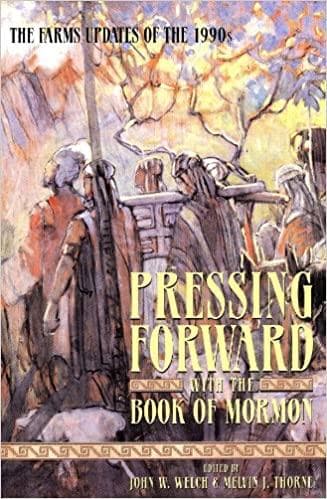Book
69 Chapters

“Behold the Lamb of God, yea, even the Son of the Eternal Father.” (1 Nephi 11:21)
One of Nephi’s favorite titles for Jesus Christ was “the Lamb of God.” Forty-four references to “the Lamb” appear in Nephi’s vision in 1 Nephi 11—14 alone. Aside from the Latter-day Saint understanding of a similar reference in Moses 7:47 and perhaps Isaiah 53:7, what evidence supports the Old World origins of this terminology?
In a 1979 article, recently selected as one of the most illuminating studies on the background of the New Testament, J. C. O’Neill contends that the phrase Lamb of God was not a Christian invention, as some scholars have supposed, but was rooted in earlier Jewish language and imagery.1 His main evidence comes from the Testament of Joseph, a Jewish text probably from the second century B.C.
O’Neill reasons, for example, that no Christian editor would have added the references to the Lamb of God to the Jewish Testament of Joseph 19, because doing so would presuppose two Messiahs (the lion and the lamb figures), a non-Christian tradition that would detract from Christ’s preeminence in the work of salvation.
The ancient roots of Testament of Joseph 19 are further evident when that text is compared with the visions in 1 Nephi and related passages in the Book of Mormon:
When John the Baptist announced Christ’s approach with the words “Behold the Lamb of God, which taketh away the sin of the world” (John 1:29), he was no doubt using a distinctive messianic title already familiar to the Jews of his day. Although modern Christian readers may consider Nephi’s use of the phrase Lamb of God centuries before the Christian era to be anachronistic, the parallels between the Book of Mormon and Testament of Joseph 19 confirm O’Neill’s position on the pre-Christian antiquity of the phrase. Thus John was not the first to use it in reference to Christ; and John and Nephi, as well as Isaiah, may have been drawing on earlier common sources.
Research by John W. Welch, originally published as a FARMS Update in Insights (August 1998): 2.
1. See J. C. O’Neill, “The Lamb of God in the Testaments of the Twelve Patriarchs,” Journal for the Study of the New Testament 2 (1979): 2—30. Reprinted in Craig A. Evans and Stanley E. Porter, eds., New Testament Backgrounds (Sheffield: Sheffield Academic Press, 1997), part of a series that collects the best articles from the first fifty issues (1978—93) of the Journal for the Study of the New Testament.
Book
69 Chapters
Items in the BMC Archive are made publicly available for non-commercial, private use. Inclusion within the BMC Archive does not imply endorsement. Items do not represent the official views of The Church of Jesus Christ of Latter-day Saints or of Book of Mormon Central.